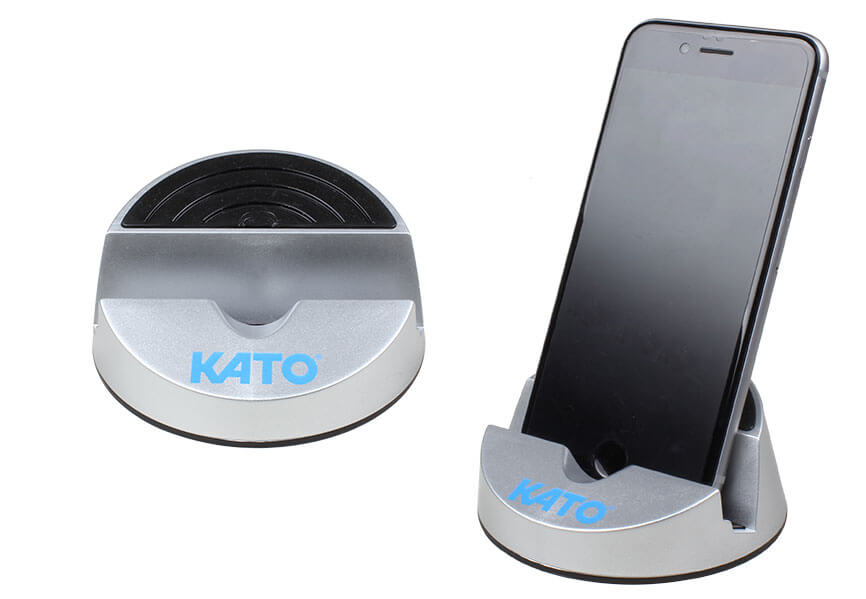
The KATO® Tech Group receives many inquiries regarding the life expectancy of our installation tools, in particular Tangless Installation Tools. There are many factors that affect the tool life. This article will deal with the subject as it applies to hand, air powered, and electric installation tooling; and we will address each of these tooling types separately.
Factors affecting tool life that are common to all tooling types include tooling thread size and thread pitch, mandrel and pawl material and hardness, tapped hole preparation and accuracy, and operator error (read the instructions). Examples used in this article will be UNC/UNF sizes, unless specific reference is made to metric sizes.
Please note that before we can address tool life, it is critical that the STI tapped holes into which the inserts are installed are per specification (Ref. MS33537). Tapped holes must accept an STI thread plug gage “GO” member, including after plating or any other supplementary coatings, and the minor diameter must be per the specification. The tapped holes should have the minimum full thread depth necessary to accommodate the insert length, and insert set down below the surface. Countersinks are strongly recommended for ease of installation, and are mandatory for power tool installation. If any of these factors are out of specification, the tool life will be adversely affected. All KATO tools (UNF/UNC sizes) are functionally tested using Class 3B minimum fit STI tapped holes in aluminum test blocks.
The Tangless hand tools are designed to install a minimum of 5000 inserts without breakage or visible wear of the mandrels, and 3000 inserts minimum for the pawls. The smaller thread sizes like 2-56 and 4-40 tend to wear out faster than the larger sizes. This is due to essentially two factors; the mandrel threads are finer, and the pawl cross sectional area is smaller. The skill of the operator will affect the tool life, as well as how the operator treats the tools. If an insert is jammed on the mandrel, yanking it off with pliers or vise grips will invariably damage the mandrel threads and/or pawl. This is especially true on the 2-56 and 4-40 sizes. Instead, the tool should be disassembled to remove the insert. And, we should mention that we have had “broken tools” returned that were clearly dropped on a concrete floor (or thrown against a wall?). The tools are not cheap, and they are fine instruments that should be treated accordingly. (When in doubt, read the instructions.)
The electric tools are essentially the mandrel assembly from the hand tools chucked into the Electric Driver. The same factors for tool life apply to these tools as mentioned for the hand tools. The torque setting on the Electric Driver should be set to the minimum torque that will install the insert. Excessive torque will shorten the tool life, or cause breakage of the mandrel and/or pawl. The operator should get used to the tool by using it first on the slow speed setting before using it on high speed. Alignment of the tool with the tapped hole is very important to prevent cross threading of the insert, or jamming of the insert in the tapped hole. Do we need to mention operator error again? (When all else fails, read the instructions.)
We are now talking serious power here (compressed air and heavy air motor) with plenty of opportunities to break stuff! First off, we are going to assume that the instructions are followed, and the complete air tool is set up for correct operation (just read the instructions). Now that you have read the instructions, you know that the Air Motor Clutch Drive™ must be used with sizes 2-56 and 4-40 Front End Assemblies to prevent the mandrel assemblies from breaking. KATO will not warrantee the mandrels and pawls without the use of the clutch drive. The mandrels and pawls on the Tangless Front End Assemblies are designed to install a minimum of 3500 inserts without breakage or visible wear. Note that the larger thread size tools typically will significantly exceed this minimum. Also note that the reference air pressure is printed on the Front End Assembly. However, in order to minimize tool wear and/or breakage, the air pressure should be set to the minimum pressure needed to install the insert. Excess pressure will shorten the life of the tools. Proper alignment of the tool with the tapped hole is critical. Some operators prefer to mount the air tool on a radial arm tool holder vs. using it free hand. This is a matter of operator preference. Again, the Tangless Front End Assemblies are not cheap, and should be treated like the fine instruments that they are. (Dude, read the instructions!)
We hope that this article is as helpful as it was exciting.
If you have any questions, please contact us.
For more technical articles, register to KATOpedia today! Registration is FREE, and take less than 1 minute to complete and gain access to the world's most comprehensive online encyclopedia for helically coiled screw thread inserts and tools.